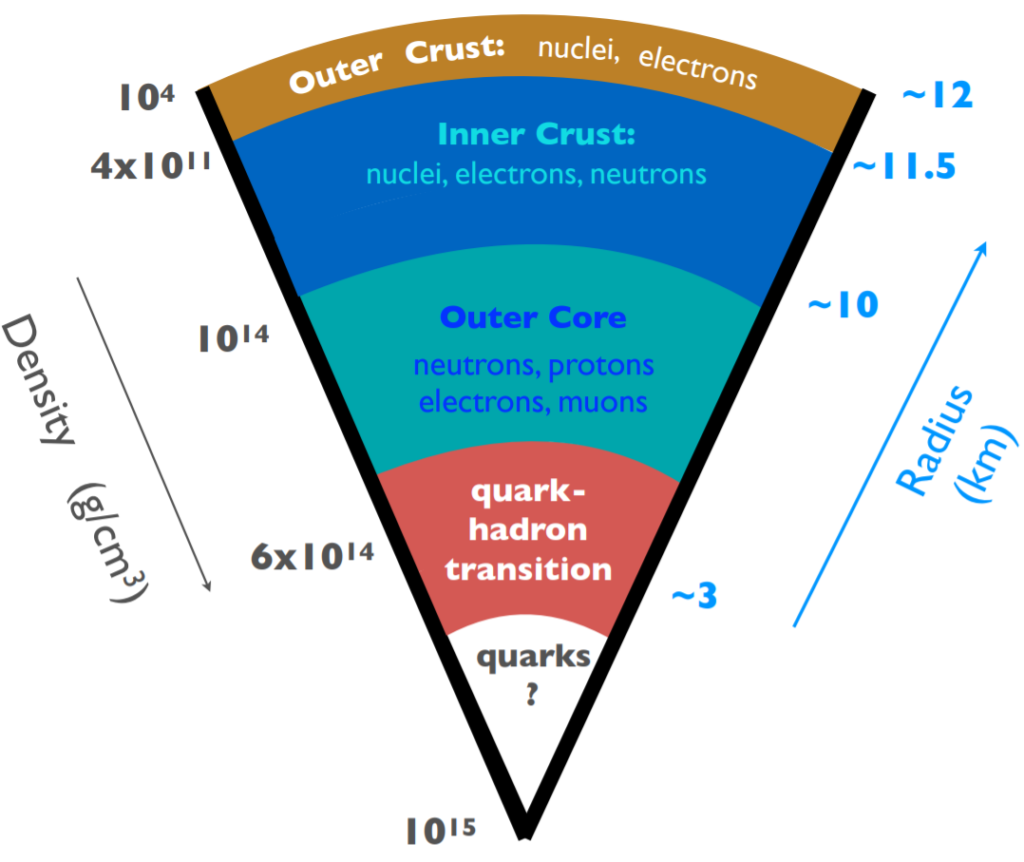Can gravitational waves reveal phase transitions in the cores of neutron stars?

Figure caption: Internal structure of a neutron star – predicted by theory. Phase transitions to states of matter containing deconfined quarks, hyperons and meson condensates are possible at the densities encountered in the inner core. (Credit: 3G Science White Paper)
What form of matter resides in the cores of neutron stars? The central densities of known neutron stars whose masses range from one to two times that of our Sun far exceed the central densities of terrestrial atomic nuclei. At such extreme densities, the expectation is that quarks, the constituents of protons and neutrons (hadrons) that make up nuclei may be liberated. The precise nature of the hadron-to-quark phase transition is unknown as first-principle calculations are currently beyond the reach of researchers.
Prospects of observationally exploring the presence of quark matter in neutron star cores have increased with the recent detection of gravitational waves from the merger of two neutron stars, an event termed as GW170817. The simultaneous detection of electromagnetic waves from this event has ushered in the era of multi-messenger astronomy as a probe of ultra-dense matter.
In the interior of massive neutron stars, the repulsive pressure of matter has to be sufficiently high to counter the enormous attractive pull of gravitational forces. This implies that the strength of interactions between quarks, were they to exist, is also very high.
Our recent work has examined various scenarios of how quarks may emerge and interact. Manifestations of their presence were studied through calculations of the sound velocity in matter containing quarks (a proxy for the relationship between pressure and density), mass-radius relations of cold stable neutron stars, and tidal effects in binary neutron star mergers.
From the extensive analyses performed, our findings have narrowed down the options for the nature of the hadron-quark phase transition to be compatible with available observational data. The required conditions to confirm the presence of quarks through the detection of gravitational and electromagnetic signals from binary merger events have been identified. We have also examined how well future observations of merger events with improved detector capabilities can constrain the properties of the phase transition, primarily its onset density and strength.
Read More:



